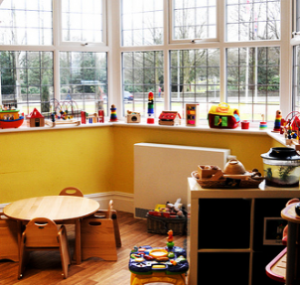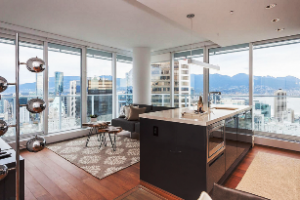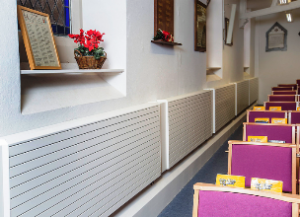JAGA UK
Suppliers of: jaga radiators LST radiators low surface temperature radiators LST radiators trench heating convector trench heaters
JAGA UK
The UK distributor of the award-winning, energy efficient heating, cooling and ventilation solutions offered by Jaga NV. Designing products with our climate in mind. Jaga products include LST (low surface temperature) radiators, radiators specially designed for use with heat pumps, fan assisted dynamic heating and ventilation systems, trench and perimeter heating products and designer radiators. The Jaga range is suitable for new build or refurbishment work in homes, offices, hotels, residential healthcare and social housing, hospitals, public buildings, schools and colleges and educational building projects. Our mission is to help our customers design and deliver successful construction and refurbishment projects by
- Supplying innovative building products and solutions
- Providing excellent support and technical expertise
- Delivering flexible, reliable logistics and outstanding customer services
- Use the companies 5 values: Respect Nature, Awake the Artist, Dream a Future, Create Emotion & Building Bridges to develop our products and inform all decisions
Useful Links:
Social Media: LinkedIn / Pinterest / Twitter / Instagram
Main Product Ranges:
Jaga LST Radiators (Low Surface Temperature)
Jaga offers the UK’s most comprehensive range of high quality Low Surface Temperature (LST) radiators, each with a safe-to-touch casing, rounded corners and fully concealed valve connections. Some models can be designed with fully concealed pipework, anti bacterial coating and continuous casings as well as the options for pencil-proof grilles and re-enforced casing. LST radiators are perfect for use in all public locations, but especially in schools or healthcare environments such as care homes, where safety and care are of paramount importance.
Jaga Trench & Perimeter Heating
Trench and perimeter heating options allow you to maximise available floor-space and offer unobstructed views without losing valuable heat output. Ideal for countering draughts from the glazed windows commonly found installed at modern office developments, Jaga’s sub-floor trench options start from a depth of just 6cm, with stylish above-floor perimeter options available where required.
A wide range of Jaga heating solutions not only successfully warm an interior, but can also be used in conjunction with Jaga’s demand controlled mechanical ventilation solution, Oxygen. The ability to ventilate means fresh, clean air is constantly pumped into a room, boosting the indoor air quality of any interior – removing excess moisture and pollutants in the air. Jaga Oxygen constantly monitors the air to ensure optimum indoor air quality is maintained without over ventilating which can cause wasted energy.
Jaga Heating & Cooling Products
Jaga offers a wide range of 2-in-1 heating and cooling systems, that not only warm an interior, but are quick to adapt to cooling until the desired temperature is reached. Jaga products built with the cooling function are highly responsive to temperature changes, making them the ideal solution for warming in the winter, and cooling in the summer.
Jaga also offers a range of designer, freestanding, wall mounted and towel radiators. Jaga UK is the trading name of Jaga Heating Products (UK) Ltd.
Further technical information and useful resources are available on the Jaga website or via the BPi download library
Jaga Heat Pump Compatible Radiator Doubles Heat Output & Provides Cooling
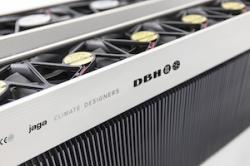 Jaga UK, a leading manufacturer of heating, cooling and ventilation solutions designed with the environment in mind, has just launched pioneering hybrid radiator technology for the UK market.
Jaga UK, a leading manufacturer of heating, cooling and ventilation solutions designed with the environment in mind, has just launched pioneering hybrid radiator technology for the UK market.
Dynamic Boost Hybrid (DBH) has been specially developed to boost heat outputs and provide light cooling with renewable energy systems such as heat pumps and solar energy. It replaces Jaga’s well-known Dynamic Boost Effect (DBE) product.
Jaga's Dynamic Boost Hybrid technology inside the radiator doubles the heat outputThe DBH technology utilises small electric thermal activators placed on top of the heat exchanger inside the Jaga Low-H2O radiator to force convection. This significantly boosts the radiator output by two to three times without increasing its size.
“When paired with a heat pump or other low flow temperature system, most emitters require a large surface area to sufficiently heat the room,” said Phil Mangnall, managing director, Jaga UK. “DBH allows you to substantially reduce the size of the radiator, freeing up valuable wall space and improving the aesthetics of the room. The system is almost inaudible and works with the majority of wall-mounted, free-standing, and trench solutions.”
Giving users more control over individual room temperatures, DBH further reduces the need for unnecessary heating and overheating, significantly cutting energy consumption and bills. Easily installed during new construction or added during building retrofits, units can be programmed to run to their own automated schedules or set to respond to direct input. The DBH activators are triggered automatically whenever hot water flows through the heat exchanger and once the room reaches the desired temperature, water stops flowing through the heat exchanger and the DBH activators turn off, keeping energy consumption low.
The key point of difference between DBH and Jaga’s former DBE technology is the ability to provide light cooling (non-condensing) with any heat pump that can supply cooling water. And if there is no cooling water, Breeze mode, where with the activators operate irrespective of water temperature, offers light air movement, ideal for a UK climate.
“As the demand for cooling increases, we wanted to come up with a more environmentally friendly, energy-efficient solution that can be easily retrofitted and doesn’t cost the earth,” said Mangnall. “Updating our proven DBE system to also provide light cooling, was the obvious solution and has already proven to be a huge success in Europe and other parts of the world. We’re pleased to be able to now offer DBH to the UK market in line with the rapid rollout of renewable energy systems to help reduce the environmental footprint of buildings across the country.”
For more information, please visit www.jaga.co.uk/dbh
ABOUT JAGA UK
Jaga are pioneers in designing innovative, ecologically sustainable heating, cooling and ventilation systems using less energy and fewer raw materials.
Jaga - Five trench heating installation challenges & how to overcome them
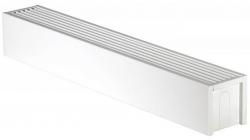 Before we delve into this blog, it’s important to note that we rarely use the term ‘trench heating’ when referring to our products. Instead, we prefer the term ‘trench climate convectors’. Although we still offer heating-only units, factors such as the warming climate, improved building insulation, and lifestyle changes, have meant that our indoor comfort needs have changed. Homes and buildings need climate comfort and good air quality throughout the year, so cooling and ventilation are now just as important as heating. Our trench climate convectors can offer these three elements in one single unit.
Before we delve into this blog, it’s important to note that we rarely use the term ‘trench heating’ when referring to our products. Instead, we prefer the term ‘trench climate convectors’. Although we still offer heating-only units, factors such as the warming climate, improved building insulation, and lifestyle changes, have meant that our indoor comfort needs have changed. Homes and buildings need climate comfort and good air quality throughout the year, so cooling and ventilation are now just as important as heating. Our trench climate convectors can offer these three elements in one single unit.
Trench units are a common and effective type of heating (and cooling and ventilation) installed inside the floor, usually around the perimeter of a room, often below glazing. Simple units consist of duct installed in the floor which houses a hot water heat exchanger and a surface grille on top which is fitted flush to the floor. This type of emitter is often chosen by architects thanks to its ability to fit seamlessly into the fabric of a building and is usually used in buildings with large glazed facades and limited wall space. But because of the level of precision required to achieve this subtle and seamless finish, trench units can be a bit trickier to design and install than wall mounted radiators.
Jaga has been designing and manufacturing standard and bespoke trench climate convectors for many years. Over that time, we’ve helped thousands of customers with installation (see our case studies) so we understand the challenges you may come up against and we know how to overcome them. Here are what we perceive to be five of the top issues to overcome:
1. Fear of the unknown
The installation process often involves overcoming the unknown. If you’ve not fitted a trench unit before, it can be a little daunting. Even if you have fitted them before, this time you may have multiple lengths which need joining together, or corners or curves. All these factors can make the job more complex and unexpected obstacles can appear that can hinder the process – particularly on refurbishment projects. That’s why Jaga UK offers a SafeContractor approved installation service for our trench climate convectors for contractors nationwide. We know our units inside out and will know what to do if we’re faced with a challenge, so let us do the hard work for you.
2. Which size and type to order
As our trench climate convectors are architectural products, often tailor-made to integrate flawlessly into a building, precision is vital, especially when it comes to mitred corners, cut-outs for columns and curved sections. There is no room for error, every millimetre makes a difference.
Before ordering your units, make sure you have taken detailed measurements for all rooms where the trench units are to be installed, creating clear drawings including pipe and electrical connection points. It’s useful to note that when installing the unit under a window or door, that the length should usually be at least equal to or greater than the length of the window or door. If using Jaga’s installation service, our technical team will do all of the measuring up for you during a site visit and produce drawings prior to liaising with the Jaga manufacturing team in Belgium to ensure your units are made to the exacting specification of your project. We’re always happy to do this even if we’re not carrying out the installation.
You’ll of course need to ensure you have chosen the correct type and size of unit to meet your heating requirement. There are three types of trench climate convector to suit different requirements:
Natural convection – If you only need heating, then natural convection is the simplest solution. This means there’s no fan, so no forced air movement and no noise. It purely relies on the hot water warming the air around the heat exchanger and creating natural air movement.
Fan-assisted – An alternative for a heating only application, is fan-assisted convection. These units operate in the same way as their natural convection counterparts but with the addition of low-noise fan units to provide increased performance when needed.
Forced draught – These units deliver high performance, low noise, heating and cooling from one single unit. They can only operate with the fan running and can provide thermal comfort in living and occupied spaces throughout the year.
When the application is for both heating and cooling, you’ll also need to choose either a two pipe, or four pipe heat exchanger so it’s useful to understand the difference between these.
Two pipe heat exchangers consist of one coil for both heating and cooling circuits, with one flow and one return water connection. This arrangement can generally provide higher performance than the four pipe alternative.
A four pipe consists of two coils; one heating and one cooling, with independent flow and return connections. This is generally the preferred option for commercial, large scale buildings that could have demand for cooling and heating simultaneously in different parts of the building.
The final component you’ll need to choose is the grille finish which is of major importance for the aesthetics of the building as well as the use of the space. But remember that the choice of grille may influence the heating or cooling performance. Outputs are generally based on grilles having open space of seventy per cent. Some decorative grilles have less open space, and this will impact again on the performance of the trench climate convector so bear in mind that you may need to apply a correction factor.
3. The units don’t fit
We all know that projects evolve during the construction phase and sometimes things change to such an extent that units previously selected and manufactured no longer fit in the given space. If height is the issue, most trench climate convectors are supplied with standard height adjusters. Quite often, the floor void can be greater than the standard adjustment and therefore, there may be a requirement for extended height adjusters, or in some cases, specially manufactured supports.
If length is the issue, the units may need to be cut down to size. When using Jaga’s technical installation team, we do our best to ensure lengths will be exact thanks to a thorough site survey. But on the rare occasion there’s an error, we’ll be equipped with the tools to cut and adjust on-site as necessary. We’ll then mount and secure them, connecting continuous runs and corners, fit grilles, and make final levelling adjustments to the finished floor ensuring a beautiful finish.
4. Which control options to use
Control options are often overlooked but can be so important. Control options are plentiful from a simple room thermostat to self-regulating integrated controls to full BMS integration.
If using thermostatic valves and thermostatic control sensor units, the thermostatic valve should be installed on the heating element inside the trench, while the control unit is fitted on the wall in a heated room similar to a radiator system. Do not install the thermostatic head inside the trench. This will give a false reading due to the ambient temperature within the unit being far warmer than the room so the thermostat will turn the unit off when it reaches the set point temperature, and the room will not reach the required temperature.
So often controls are overlooked, or designed with the base build in mind rather than the fit-out. You can easily end up with a sensor in one space controlling heating in a different space, so be mindful of the final layout of the building when selecting and installing the control systems
5. Time consuming installation
It’s usually the case that trench climate convectors take longer and are more complex to install than wall-mounted convectors, especially if it’s not something you’ve installed and connected up before.
If using Jaga’s installation service, you can usually reduce the time on site, thanks to the experience and technical knowledge of the team. They know the products so well that they can often install them in less time than anyone else can. If installation time is reduced, the overall costs of installation can therefore be much lower, so it often pays to use the experts.
To find out more about the installation support services Jaga UK can provide, see our Installation and Support page or get in touch with our friendly team to discuss trench products and installation requirements.



